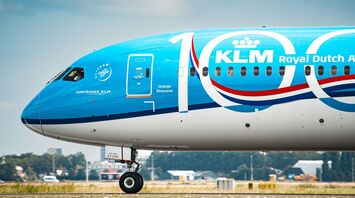KLM Boeing 777-200ER Returns to Amsterdam Schiphol Airport After Hydraulic Issues

A KLM passenger jet returned to Amsterdam Schiphol Airport due to a hydraulic failure mid-flight. Despite the mechanical issues, the airline confirmed that passengers and crew were never in any danger.
KLM Flight KL 705 was en route from Amsterdam Airport Schiphol (AMS) to Galeão–Antonio Carlos Jobim International Airport (GIG) in Brazil on June 23rd. Shortly after departure, the aircraft, a Boeing 777-200ER, experienced a hydraulic failure, prompting the crew to return to AMS as a precaution.
According to FlightAware, the aircraft reached cruising altitude at FL310 and began its return to Amsterdam just north of Beauvais–Tillé Airport (BVA) after approximately 26 minutes in the air. The crew performed a holding maneuver to dump fuel and reduce the aircraft's weight before landing safely on runway 27 at 15:08 local time. The entire flight lasted 1 hour and 56 minutes, having departed at 13:16.
The Aviation Herald reported that the center-left hydraulic interface module (HYDIM CL) showed a fault, leading to the failure of the main gear doors to close properly. Observers noted that the gear doors remained open during landing, indicating the hydraulic issue.
The aircraft involved was a Boeing 777-200ER, registered PH-BQB, built 20.7 years ago at Boeing's Everett plant, powered by two General Electric GE90 engines.
KLM reassured passengers that safety was never compromised and arranged for another aircraft to complete the flight. A Boeing 777-300ER was sourced, and passengers continued their journey to Brazil after a minimal delay of approximately 2 hours and 45 minutes.
Mechanical failures, though rare, can occur, particularly in older aircraft. Despite rigorous maintenance and inspections, components can wear out. In this case, the hydraulic failure did not pose a safety risk but would have caused increased drag and fuel consumption, making it impossible to complete the flight.
This incident highlights the importance of aircraft maintenance and the effectiveness of safety protocols in handling such situations. KLM's quick response ensured minimal disruption for passengers while maintaining high safety standards.



















